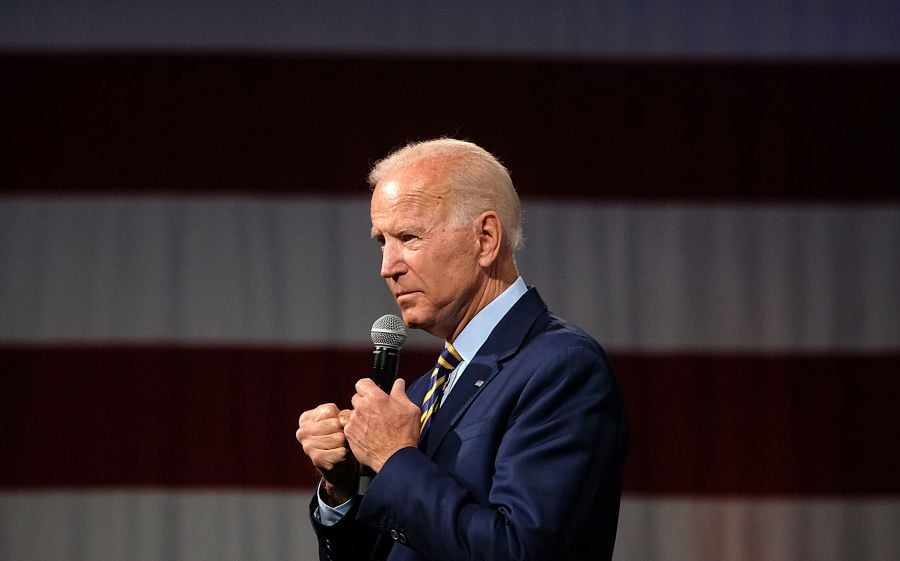

President Joe Biden announced a sweeping package of student debt relief, forgiving $10,000 for most holders of student loans and as much as $20,000 in loans for some recipients and extending the moratorium on repayments for four months, until the end of the year.
Biden will also announce changes Wednesday to the current loan system, allowing borrowers with loans from their undergraduate years to cap repayments at 5% of their monthly income. He will detail his plans in a speech Wednesday afternoon from the White House.
The $20,000 in debt forgiveness will apply to loans for those who also receive Pell grants. For most student-loan holders, the limit on debt forgiveness will be $10,000. That figure -- paired with a $125,000 income cap for individuals and $250,000 for households -- is in line with a level Biden has been weighing for several months.
But it falls short of the amount that advocates have sought. Progressive lawmakers, civil rights groups and labor leaders pressured the White House to forgive higher debt loads, arguing they are disproportionately carried by Black or lower-income students.
The Biden Administration will also propose a new rule capping borrowers from paying more than 5% of their monthly discretionary income on undergraduate federal loans -- down from 10% today.
The proposed rule also says that borrowers who make less than 225% of the federal minimum wage -- roughly $30,577, or what a full-time worker earning $15 per hour earns -- aren't required to make payments on their federal undergraduate loans, according to the Department of Education.
The rule calls for the government to forgive loan balances of $12,000 or less after a borrower has made 10 years of payments. Currently, borrowers must pay their loans for two decades and have a balance below that amount to have debt forgiven.
The proposal also would restrict unpaid monthly interest from accruing as long as borrowers are making payments, so those who benefit from capped loan payments won’t see their overall balances grow.
Although they’d pushed for a higher per-borrower debt relief figure, progressives said they viewed the forgiveness of $20,000 for Pell grant recipients as a major win. Broader loan cancellation amounts for low-income people had been a major goal.
“With the flick of a pen, President Biden has taken a giant step forward in addressing the student debt crisis by cancelling significant amounts of student debt for millions of borrowers,” Sen. Elizabeth Warren and Senate Majority Leader Chuck Schumer said in a joint statement.
The latest repayment pause would be the final one that Biden backs, meaning payments that had been on hold for nearly 2½ years would resume in January. The additional extension will allow time to process loan balances and reboot a system that has been on hiatus, a person familiar with the matter said.
It’s the seventh extension of the freeze since the Covid-19 pandemic began in March 2020, and it would take the pause beyond the November midterm elections, in which Democrats are hoping to stave off a loss of their slim House and Senate majorities. The latest pause in loan repayments is set to expire Aug. 31. Support from young voters could help boost Democrats’ showing.
Republicans have been critical of the move, arguing it would fuel inflation and put taxpayers on the hook.
“President Biden’s student loan bailout is unfair to hardworking Americans who do not hold a college degree or who made tough financial decisions to pay for their college education,” said Rep. James Comer of Kentucky, the ranking Republican on the House Oversight Committee. “This bailout also raises ethical concerns about Biden Administration officials with student loans who have worked on this policy and stand to benefit financially.
A senior administration pushed back on criticism that the debt cancellation plan could exacerbate inflation, saying that the fiscal effects of targeting relief while restarting payments will largely offset -- and could even lower inflation in the long term.
Biden’s moves would clear student debt for an estimated 20 million Americans, according to the official.
In his speech outlining the student debt plan, Biden also is expected to discuss ways to make the student loan system more manageable for current and future borrowers by cutting monthly payments in half for undergraduate loans.
The Biden administration argues the package will help lower-income people, with 90% of the relief going to borrowers who earn less than $75,000 a year.
The Penn Wharton Budget Model out of the University of Pennsylvania estimated in an analysis released Tuesday that forgiving student loan debt would cost between $300 billion and $980 billion over 10 years, depending on the scope.
[More: Sharing the student debt load]

Relationships are key to our business but advisors are often slow to engage in specific activities designed to foster them.

Whichever path you go down, act now while you're still in control.

Pro-bitcoin professionals, however, say the cryptocurrency has ushered in change.

“LPL has evolved significantly over the last decade and still wants to scale up,” says one industry executive.

Survey findings from the Nationwide Retirement Institute offers pearls of planning wisdom from 60- to 65-year-olds, as well as insights into concerns.
Streamline your outreach with Aidentified's AI-driven solutions
This season’s market volatility: Positioning for rate relief, income growth and the AI rebound
